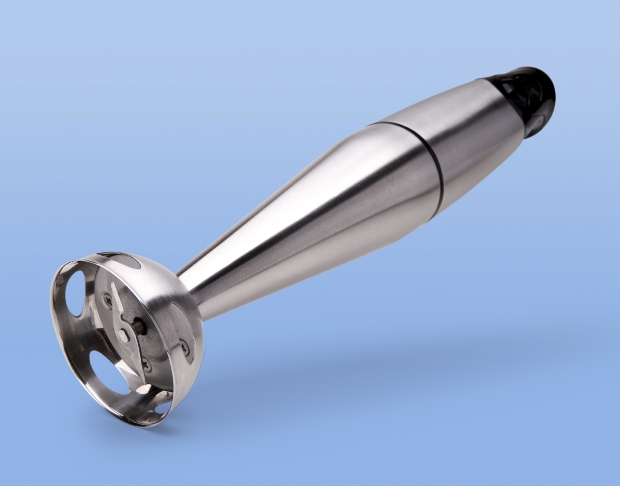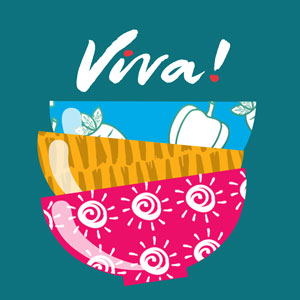Tools of the Trade: blenders, pressure cookers & slow cookers

You don’t ‘need’ lots of kitchen gadgets – good knife skills, a masher and grater will take you a long way. But they can make life a lot easier and in some cases, extend the kinds of food you can eat. They can also save a lot of time – which if you’re working, is important.
It’s a whizz! Blenders and food processors This section gives an overview of different types of blenders and processors.
If you like cooking and do a fair bit, food machines are a huge help. Even if you don’t cook a great deal, the addition of a stick blender with attachments will immediately enlarge your culinary repertoire!
![[node:title] [node:title]](/sites/default/files/styles/medium/public/images/articles/stick_or_hand_blender_plus_attachments_andrew_james.jpg) Stick blender (also known as hand or immersion blender)
Stick blender (also known as hand or immersion blender)
Pros & Cons
- Inexpensive (around £30 with attachments, sometimes less) Doesn’t grate or chop vegetables
- Space economical – especially if you use the wall wall attachment to tidy it away easily
- Doesn’t make bread or pastry
- Easy to clean (just wash under tap)
- More work than a goblet blender as you have to move it around in the pan
- Blends directly into the saucepan/jug so no juggling with hot ingredients or pans
- Mashes/pulverises but doesn’t chop, so no good for herbs (except pesto making)
- Good for soup, sauces, smoothies, mashed potatoes, making tofu creamy and smooth for desserts, mayonnaise or vegan quiches
- Blades are unprotected
- Good for small batches eg sauces, nuts, breadcrumbs (attachments only)
Attachments give you a better deal. As well as the main blender itself – which you use to blend in the saucepan or measuring jug – you get
- a grinder (for nuts, seeds, spices, fresh herbs, breadcrumbs etc) – these vary in efficiency. Some will grind nuts well, others won’t.
- a balloon whisk (use a very deep bowl to avoid splash back!)
![[node:title] [node:title]](/sites/default/files/styles/medium/public/images/articles/vitamix.jpg) Goblet Blender
Goblet BlenderPros & Cons
- Faster than a stick blender, eg will puree soup in a couple of seconds
- The top end, eg Vitamix, are expensive but have massive engines and are very powerful (can make nut butters, hot soup and ice cream!). The cheaper types can’t cope with some jobs
- Doesn’t grate or chop vegetables
- Good for soup, sauces, smoothies, making tofu creamy and smooth for desserts or vegan quiches
- Doesn’t make bread or pastry
- Cheaper than a processor but bottom end is around the same price range as a stick blender – top end very expensive but very hard-wearing
- More fiddly to extract food
- Safer, because the blade is inside the goblet and there is a lid – reduces the risk of accidents
- To clean, add a drop of washing-up liquid, warm water and whizz up on the stand! (Not all goblets are dishwasher-friendly)
- Less splash potential than a stick blender
- Less space-economical than a stick blender but may be smaller than a food processor
- Better for small batches than a food processor (eg mayo) but not as good as a hand blender for small batches
![[node:title] [node:title]](/sites/default/files/styles/medium/public/images/articles/magimix.jpg)
Food Processor
Pros & Cons
- The different blade attachments make bulk vegetable chopping or grating extremely fast and simple
- Takes up space on work surface; if you tidy a processor in a cupboard, chances are that you won’t use it much
- Modern models have better timing controls so help you to avoid over-processing
- Doesn’t mash potatoes (they become gloopy and horrible!)
- More expensive.
- Most worthwhile if you buy a decent model with a powerful motor, robust components and good blades. The cheaper models tend to skimp on some or all of these
- Simplifies pastry-making, especially if you have ‘hot hands’!
Pressure Cookers
These are genius for cooking beans, soups and such – you can even cook big beans without pre-soaking (though I prefer to soak if time). Prices also vary enormously so shop around. I love mine – it’s a simple to use Tefal Clipso and I’ve had it for years. But lots of people are nervous of them. Advice? Go to a good kitchen shop or department (eg John Lewis) and get a demo or good explanation about how different models work – then work out what type and size is best for your needs. 
Pros & Cons
- Modern types sometimes have simpler controls than older models with weights
- Modern models have good safety features, which may help you avoid the’ exploding apple sauce’ phobia!
- Cooks pre-soaked big beans in 15 minutes, eg kidney beans, chickpeas, a bit longer if not soaked
- Cooks quite large quantities of beans – these can be frozen in small portions, saving fuel and money – great for quick meals when you’re busy and cheaper than tins
- Makes soup in about 15 minutes (including lentil soup)
- Makes jam
- Find basic timings for pulses etc in the handbook – or search the Web
- Handbooks tend to focus on meat cooking but there is plenty of vegan inspiration on the Web. Eg 50+ Vegan-friendly Pressure Cooker Recipes
 Slow Cookers
Slow Cookers
Also known as a crock pot, this 70’s favourite has seen a revival because of its thrifty way with fuel and its ability to cook simple ingredients slowly and well. It uses less power than a light bulb – far cheaper than using the oven. It also cooks food for you while you’re out at work. Coming home to a well-cooked, home-made and tasty hot meal at the end of a long day is bliss… so if you have one gathering dust in the back of the cupboard, dig it out! Otherwise, buy a new one – try eBay or Amazon – there are lots of good deals around. They come in different sizes, but a larger model means you can cook enough for a couple of days – or just freeze what’s left over.
IMPORTANT NOTE. Never cook large beans from scratch eg kidney, in a slow cooker. These must be boiled for at least 15 minutes first before adding them to the slow cooker.
Taste-wise, any casserole/curry or similar dish always benefits from being cooked slowly. And just as stews and curries usually taste better the next day because the flavours have had a chance to infuse, so do slow cookers work the same magic. They also seal in nutrition.
Some models have only one setting, while others have a high, low and automatic. I always use the lowest setting and give a dish at least eight hours. Depending on your schedule, you may prefer to cook your dish overnight and switch it off at breakfast time – then reheat in an ordinary pan or microwave when you’re ready to eat. Alternatively, prepare the raw ingredients before you got to work then stick everything in the slow cooker so your meal is ready in the evening.
Fluids: there is no need to flood the crock with lots of fluid but there will need to be a similar amount to what you would usually use in a stew, rice pudding or so forth so it doesn’t burn at the sides. There are plenty of veggie recipes that benefit from the slow treatment, including the classic ratatouille (aubergine, courgette and tomato stew).
A list of VRC recipes that can be slow cooked:
• Spicy Peanut Soup
• Lentil & Frankfurter Stew with Greens
• Moroccan Rice Pudding
• Potato & Watercress Soup
• Carrot & Coriander Soup
• Muttar Panir (Curd and Pea Curry)
• Cauliflower & Chick Pea Curry

The author
This post was written by VRC Team
Vegan Recipe Club is part of the UK’s leading vegan charity, Viva!. We have hundreds of delicious vegan recipes; from easy weeknight dinners to showstopper desserts, and everything in-between! Keep your eyes peeled for new recipes each month developed by our expert team of foodies and from guest chefs too.
